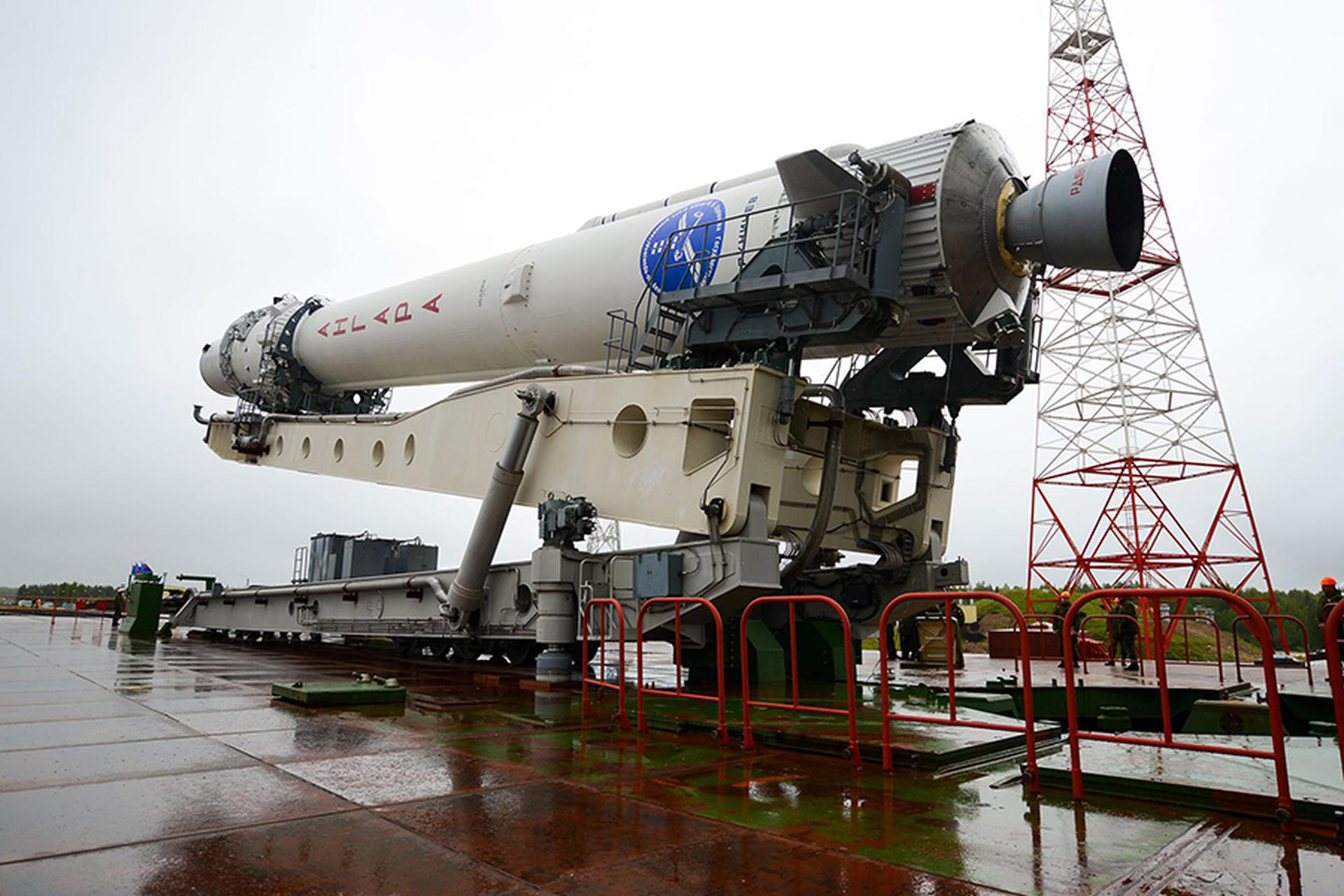
Angara 1.2
ActiveKhrunichev State Research and Production Space Center (KhSC)
July 9, 2014
Description
The Angara 1.2 is the base launcher for the Angara launch family that uses a modular approach to create multiple launch vehicle configurations for various mission requirements. The Angara 1.2 consists of a standard Universal Rocket Module for the core stage and either a modified Block I Upper Stage or a Briz-KM upper stage.
Specifications
-
Stages
2 -
Length
41.5 m -
Diameter
2.9 m -
Fairing Diameter
2.9 m -
Launch Mass
171.0 T -
Thrust
1920.0 kN
Family
-
Name
Angara 1.2 -
Family
― -
Variant
1.2 -
Alias
― -
Full Name
Angara 1.2
Payload Capacity
-
Launch Cost
$31000000 -
Low Earth Orbit
3700.0 kg -
Geostationary Transfer
Orbit
― -
Direct Geostationary
― -
Sun-Synchronous Capacity
2400.0 kg
Khrunichev State Research and Production Space Center
Government
Director: Andrey Vladimirovich Kalinovskiy
KhSC 1916Khrunichev State Research and Production Space Center is a Moscow-based producer of spacecraft and space-launch systems, including the Proton and Rokot rockets and is currently developing the Angara rocket family. The Proton launch vehicle launches from Baikonur and Rokot launches from Baikonur and Plesetsk. Angara will launch from Plesetsk and Vostochny.
Angara 1.2 | Kosmos 2591-2594
Khrunichev State Research and Production Space Center | RussiaPlesetsk Cosmodrome, Russian Federation
Aug. 21, 2025, 9:32 a.m.
Angara 1.2 | 3 x Rodnik (Kosmos 2585, 2586, 2587)
Khrunichev State Research and Production Space Center | RussiaPlesetsk Cosmodrome, Russian Federation
March 16, 2025, 10:49 a.m.
Status: Launch Successful
Mission:
Note: Payload identity and Cosmos series numbering not confirmed. The Strela (Russian: Стрела) are Soviet, then Russian, military space telecommunication satellites, in use since 1964. These satellites operate as mailboxes ("store-and-forward"): they remember the received messages and then resend them after the scheduled time, or by a command from the Earth. They can serve for up to five years. The satellites are used for transmission of encrypted messages and images. The operational constellation consists of 12 satellites in two orbital planes, spaced 90° apart. The spacecraft had a cylindrical body with a gravity-gradient boom, which was extended on-orbit to provide passive attitude stabilization. On-board storage was 12 Mbits of data, with a transmission rate of 2.4 kbit/s. The first three satellites were launched in 1964 by a Cosmos launcher. After one year of service, new and improved satellites were launched, called Strela-2. In 1970, these satellites were modernized, and became the Strela-1M and Strela-2M satellites. From 1985, these satellites will be gradually replaced by Strela-3, and then by Strela-3M from 2005. A civilian version of these satellites was created, called Goniets. Initially they were launched in groups of six on Tsyklon; when the launcher was retired, they were only launched by two on Cosmos, before Rokot was put into service and allowed the sending of triplets of Strela satellites.
Low Earth OrbitElectron
The Nation God Navigates (iQPS Launch 5)
Rocket Lab Launch Complex 1B - Rocket Lab Launch Complex 1, Mahia Peninsula, New ZealandSynthetic aperture radar Earth observation satellite for Japanese Earth imaging company iQPS.
Ariane 62
Sentinel-1D
Ariane Launch Area 4 - Guiana Space Centre, French GuianaSentinel-1D carries an advanced radar technology to provide an all-weather, day-and-night supply of imagery of Earth’s surface as part of the Sentine…
Long March 7A
Unknown Payload
201 - Wenchang Space Launch Site, People's Republic of ChinaDetails TBD.
LVM-3 (GSLV Mk III)
CMS-03 (GSAT-7R)
Satish Dhawan Space Centre Second Launch Pad - Satish Dhawan Space Centre, IndiaCommunications Satellite for the Indian Navy, replacing GSAT-7 for secure real-time links between Indian warships, submarines, aircraft, and shore-ba…
Falcon 9
Bandwagon 4 (Dedicated Mid-Inclination Rideshare)
Space Launch Complex 40 - Cape Canaveral SFS, FL, USADedicated rideshare flight to a mid-inclination orbit with dozens of small microsatellites and nanosatellites for commercial and government customers.

